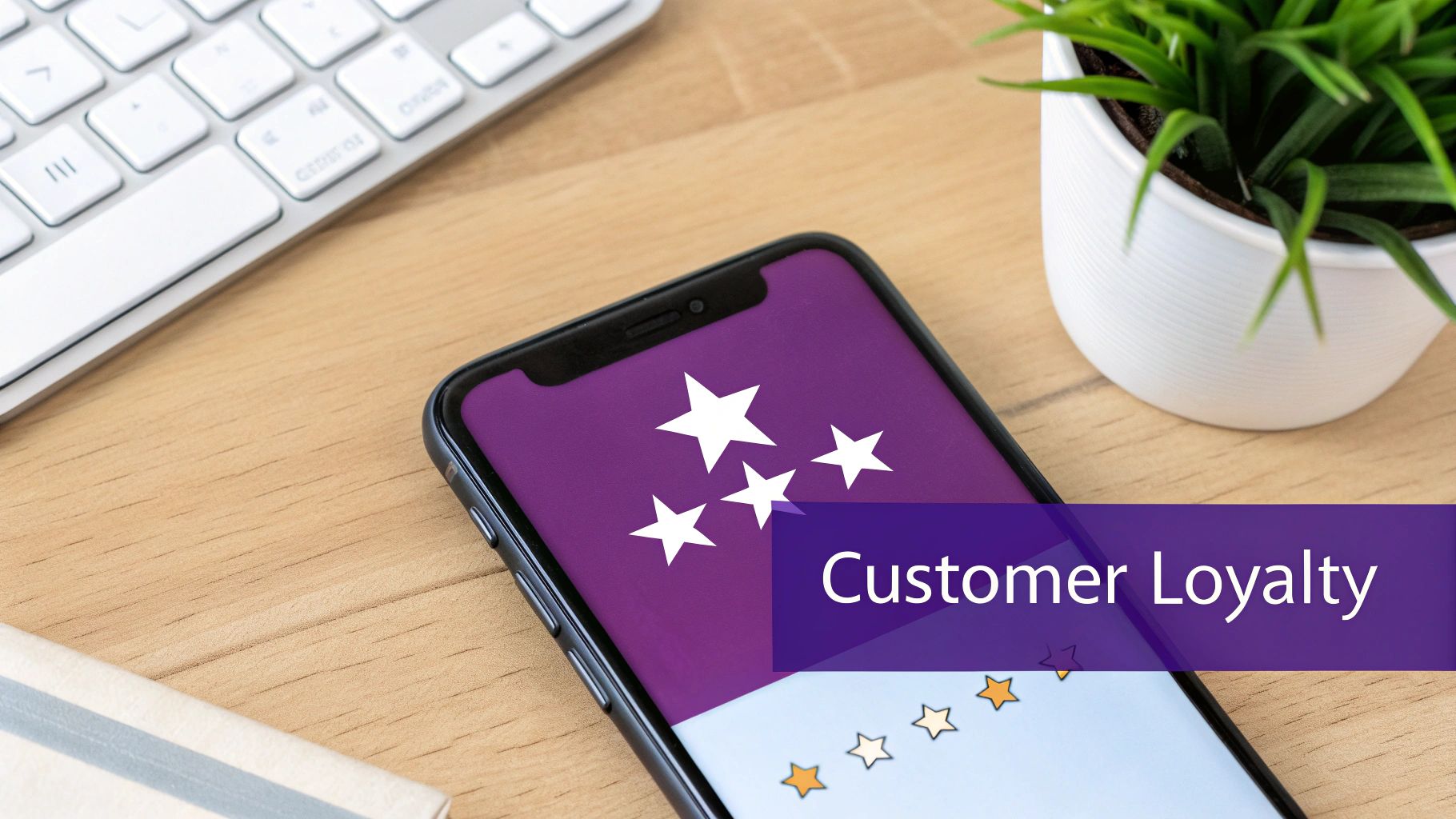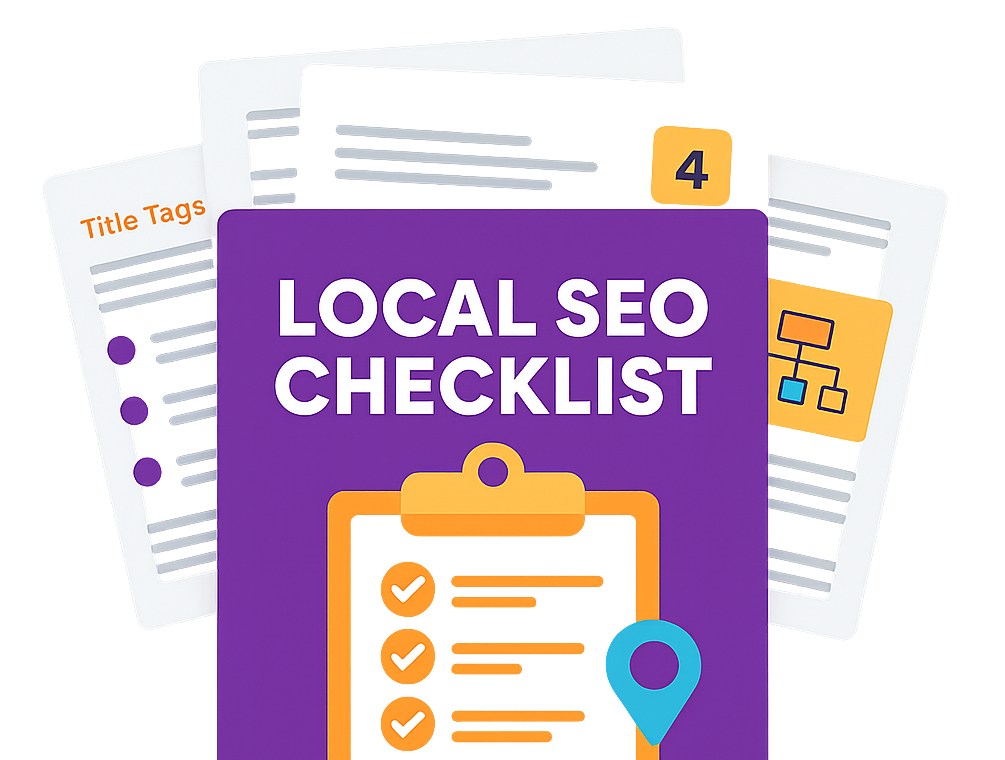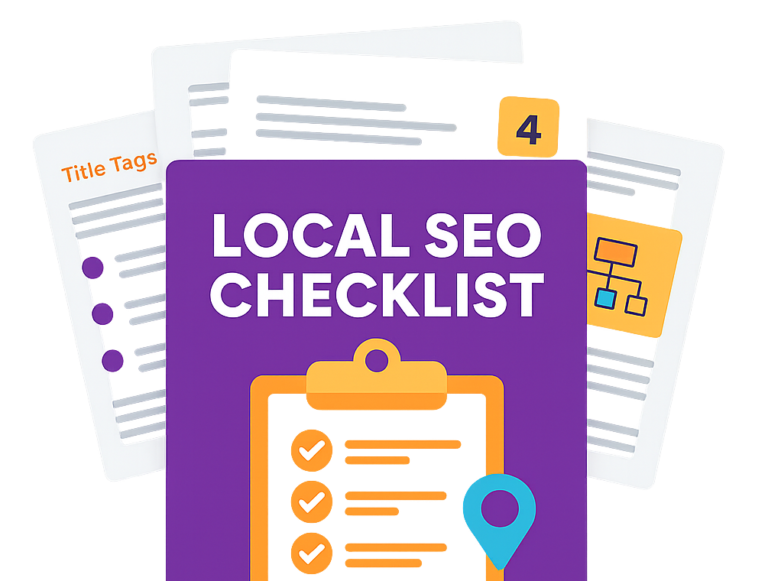Navigating the journey from a promising startup to a thriving enterprise requires more than just a great idea; it demands a clear, actionable plan. In a competitive market, standing still is not an option. This guide presents ten proven small business growth strategies, meticulously broken down into actionable steps designed for immediate implementation.
Whether you're a local service provider in Cambridgeshire aiming to attract nearby customers or an e-commerce business seeking to increase online sales, this roadmap is for you. We move beyond generic advice to offer practical frameworks and real-world examples, empowering you to choose and implement the approaches that best align with your unique business goals and resources. You will learn how to deepen your market presence, forge powerful alliances, and harness the power of digital innovation. These strategies provide a comprehensive toolkit for sustainable expansion in 2025.
We will explore diverse tactics, from market penetration and strategic partnerships to operational automation and niche specialisation. Each section is structured to provide clear, concise insights you can apply directly to your organisation. Let's begin building your roadmap to success.
1. Market Penetration Strategy
Market penetration is one of the most fundamental small business growth strategies, focusing on increasing your market share within an existing market. Instead of creating new products or exploring new territories, this approach concentrates on selling more of your current offerings to your existing customer base and capturing customers from your competitors. It's often considered the lowest-risk strategy because it leverages what you already know: your products, your customers, and your market. The goal is to become the dominant player in your current space.

This strategy works by intensifying your current efforts. Think of how coffee shops introduce loyalty cards to encourage more frequent visits or how a local Cambridgeshire bakery might offer a special deal on a second pastry. These tactics boost purchase frequency and average transaction value without reinventing the wheel.
How to Implement This Strategy
To effectively penetrate your market, you need a focused, multi-pronged approach.
- Launch a Customer Loyalty Programme: Offer tangible rewards like discounts, exclusive access, or free products for repeat business. This not only retains customers but encourages them to spend more.
- Refine Your Pricing: Don’t be afraid to adjust prices. You could introduce a lower-priced entry-level option to attract competitors' customers or create premium bundles to increase the average spend of your loyal clients.
- Intensify Marketing Efforts: Increase your marketing budget, focusing on channels where your target audience is most active. For a local service provider, this might mean more targeted social media ads or local search engine optimisation (SEO).
- Enhance Customer Experience: A superior customer journey is a powerful differentiator. Streamline your checkout process, improve customer service response times, and personalise communications to reduce churn and build a loyal following.
2. Strategic Partnerships and Alliances
Forming strategic partnerships is a powerful method among small business growth strategies, allowing you to collaborate with complementary businesses to achieve shared goals. Instead of going it alone, this approach leverages the strengths, resources, and customer bases of other companies. Alliances can range from informal referral agreements to formal joint ventures, enabling small businesses to expand their reach and capabilities far beyond what they could manage independently. It’s about creating a win-win situation where both parties benefit from the collaboration.

This strategy unlocks new opportunities by combining forces. Think of a local Cambridgeshire fitness studio partnering with a nutritionist to offer holistic wellness packages, or a coffee shop sourcing pastries from a local bakery to enhance its menu. These collaborations provide added value to customers and open up new revenue streams for both businesses involved.
How to Implement This Strategy
To build successful and lasting partnerships, a clear and organised approach is essential.
- Identify Complementary Partners: Look for businesses that share your target audience but are not direct competitors. Your values and brand reputation should be aligned to ensure a smooth collaboration.
- Establish a Clear Agreement: Formalise the partnership with a written agreement. This should clearly define roles, responsibilities, goals, and how success will be measured to prevent future misunderstandings.
- Create a Mutual Value Proposition: Ensure the partnership is genuinely beneficial for both sides. What does each partner gain? A clear, mutual benefit is the foundation of a strong, long-term alliance.
- Start with a Pilot Project: Before committing to a large-scale venture, test the waters with a smaller, low-risk pilot project. This allows you to assess the partnership's effectiveness and make adjustments.
3. Digital Marketing and Content Strategy
A comprehensive digital and content approach is one of the most powerful small business growth strategies available today. This strategy focuses on using online channels to attract, engage, and convert customers by creating and distributing valuable, relevant content. Rather than relying solely on outbound advertising, it builds a sustainable customer acquisition engine through search engine optimisation (SEO), social media engagement, and email marketing. The goal is to establish your brand as an authority and draw customers in organically.
This strategy works by solving your audience's problems. Think of how HubSpot offers free educational resources to attract business clients, or how a local Cambridgeshire restaurant uses Instagram to showcase its dishes and drive foot traffic. By providing value upfront, you build trust and create a loyal following that eventually converts into paying customers. Learn more about how to create a successful content strategy on bare-digital.com.
How to Implement This Strategy
A successful digital presence requires a coordinated and consistent effort across multiple channels.
- Invest in SEO for Long-Term Growth: Optimise your website to rank for relevant keywords. This drives consistent, high-quality organic traffic over time, reducing your reliance on paid advertising.
- Create Problem-Solving Content: Develop blog posts, videos, or guides that address your target audience's key pain points. This establishes your expertise and builds a relationship before they are ready to buy.
- Nurture Leads with Email Marketing: Use email to build direct relationships with potential and existing customers. Send them valuable content, exclusive offers, and personalised updates to guide them through the sales funnel.
- Engage Authentically on Social Media: Choose one or two platforms where your audience is most active and master them. Focus on creating genuine conversations and leveraging user-generated content to build a strong community.
4. Customer Retention and Loyalty Programmes
Focusing on existing customers is one of the most cost-effective small business growth strategies available. Rather than solely chasing new leads, this approach centres on maximising the value of your current customer base through exceptional service and structured loyalty programmes. Research from Bain & Company famously shows that acquiring a new customer costs significantly more than retaining an existing one, making this strategy a high-impact, low-risk route to sustainable growth.

The core idea is to foster a deeper relationship that encourages repeat business and turns satisfied customers into vocal brand advocates. Think of Sephora’s Beauty Insider programme, which rewards shoppers with points and exclusive access, or a local Cambridgeshire bookstore offering a stamped card for a free coffee after ten purchases. These initiatives build habits and emotional connections, driving predictable revenue.
How to Implement This Strategy
A successful retention strategy requires a proactive, personalised approach that makes customers feel valued.
- Implement a Tiered Loyalty Programme: Create different reward levels to encourage customers to spend more to unlock greater benefits, such as exclusive discounts or early access to new products.
- Personalise Communications: Use a CRM system to track purchase history and preferences. Send targeted emails with product recommendations or special offers based on past behaviour.
- Create VIP Experiences: Identify your most valuable customers and offer them exclusive perks like a dedicated support line, special events, or surprise gifts to solidify their loyalty.
- Actively Seek and Respond to Feedback: Regularly ask for customer opinions through surveys and reviews. More importantly, visibly act on that feedback to show you are listening and care about their experience. For more insights on keeping customers engaged, explore our guide on e-commerce conversion rate optimisation.
5. Product/Service Diversification
Product or service diversification is a powerful small business growth strategy where you introduce new offerings to expand your business. This can involve adding products related to your current line-up (related diversification) or venturing into entirely new areas (unrelated diversification). The core idea is to create new revenue streams, reduce reliance on a single product, and deepen your relationship with existing customers. This approach allows you to capture a larger share of your customers' spending and attract new market segments.
This strategy prevents stagnation and hedges against market shifts. For instance, a local Cambridgeshire gym could add nutrition counselling and physiotherapy services, while a restaurant might introduce catering or a meal-prep delivery service. These moves leverage an existing customer base and brand reputation to enter adjacent markets with a lower barrier to entry.
How to Implement This Strategy
A successful diversification strategy requires careful research and execution to ensure new ventures complement your core business.
- Start with Adjacent Offerings: Begin by launching products or services that logically complement what you already sell. Ask what else your current customers need that you could realistically provide.
- Validate Demand First: Before significant investment, create a minimum viable product (MVP) or run a pilot programme to test the market. Gather customer feedback to refine the offering.
- Ensure Brand Alignment: Any new venture must align with your established brand identity and values. A mismatch can confuse customers and dilute your core brand message.
- Leverage Existing Channels: Where possible, use your current sales, marketing, and distribution channels to promote and deliver the new offering, which reduces initial costs and speeds up market entry.
6. Geographic Expansion
Geographic expansion is a powerful small business growth strategy that involves taking your successful business model into new physical territories. Instead of creating new products, you replicate your proven operations in a new neighbourhood, city, or even country. This approach allows you to access entirely new customer bases and diversify your revenue streams, reducing reliance on a single market. It's an ambitious step that capitalises on a well-established brand and operational efficiency.
This strategy is about scaling what already works. Think of a popular Cambridgeshire café opening a second branch in a neighbouring town or an e-commerce brand that starts offering international shipping to Europe. These moves unlock significant growth potential by tapping into fresh demand without reinventing core offerings.
How to Implement This Strategy
A successful geographic expansion requires meticulous planning and a phased rollout.
- Conduct Thorough Market Research: Analyse the demographics, competition, and local regulations of your target area. Ensure there is a genuine demand for your products or services before committing resources.
- Start with Adjacent Markets: Begin by expanding to nearby locations with similar customer profiles. This "step-stone" approach minimises risk and allows you to apply your existing market knowledge more effectively.
- Adapt to Local Tastes: While maintaining your core brand identity is crucial, be prepared to make minor adjustments to your offerings to suit local preferences and cultural nuances.
- Establish Robust Systems: Before expanding, ensure your operational processes, from supply chain to customer service, are solid and scalable. A weak foundation will crumble under the pressure of managing multiple locations.
7. Strategic Acquisition and Mergers
While often associated with large corporations, strategic acquisitions are powerful small business growth strategies that can accelerate expansion significantly. This approach involves purchasing or merging with another business to quickly gain market share, acquire talent, access new technologies, or enter new markets. It's a proactive way to achieve growth objectives that might otherwise take years to accomplish organically.
This strategy isn't just about big-money deals. A local Cambridgeshire accounting firm might acquire the client list of a retiring practitioner, or a marketing agency could merge with a specialised web development firm to broaden its service offerings. These moves allow a business to instantly absorb a new customer base, new skills, and a stronger competitive position.
How to Implement This Strategy
A successful acquisition requires meticulous planning and execution to realise its full potential.
- Conduct Thorough Due Diligence: Go beyond the financials. Scrutinise legal contracts, operational processes, and customer satisfaction levels. Uncovering hidden liabilities or cultural misalignments early is crucial.
- Secure Appropriate Financing: Explore all funding options, from traditional bank loans to seller financing. Have your capital secured before you enter serious negotiations to demonstrate credibility and readiness.
- Plan the Integration Meticulously: A clear integration plan is vital. Decide how you will merge technology, processes, and company cultures before the deal is finalised to ensure a smooth transition.
- Communicate Transparently: Keep employees, clients, and suppliers from both businesses informed throughout the process. Clear communication minimises uncertainty and helps retain key talent and customers.
- Focus on Cultural Compatibility: A clash of company cultures can derail an otherwise sound acquisition. Ensure your values and work ethics align to create a unified and productive organisation post-merger.
8. Franchise or Licensing Model
Franchising or licensing is a powerful small business growth strategy that enables rapid expansion by allowing third parties to operate under your established brand. Instead of funding new locations yourself, you grant others the right to use your business model, systems, and trademarks in exchange for fees and ongoing royalties. This approach minimises capital outlay and leverages the local expertise and entrepreneurial spirit of your franchisees or licensees, transforming your role from an operator into a brand manager.
This model's effectiveness is proven by global giants like McDonald's and local successes alike. It allows a business to scale its footprint much faster than through organic growth alone. The key is having a proven, replicable system that can be taught and consistently executed by others, ensuring brand standards are maintained across all locations.
How to Implement This Strategy
To successfully launch a franchise or licensing model, you need a meticulous and legally sound framework.
- Perfect and Document Your Model: Before you can sell your business concept, it must be flawless. Document every process, from marketing to daily operations, in a comprehensive operations manual that serves as the blueprint for franchisees.
- Establish a Legal Structure: Work closely with a solicitor specialising in franchise law. They will help you create the Franchise Disclosure Document (FDD) and franchise agreement, ensuring you comply with all legal requirements and protect your intellectual property.
- Select Franchisees Carefully: Your first franchisees are critical to your success. Look for partners who not only have the necessary capital but also share your vision and possess a strong work ethic. Their character is as important as their finances.
- Provide Robust Training and Support: A franchisee's success is your success. Develop a thorough training programme and provide continuous support in areas like marketing and operations. A strong local SEO strategy for franchises is essential for helping new locations attract customers from day one.
9. Operational Excellence and Automation
Focusing on operational excellence is one of the most powerful internal small business growth strategies, centring on improving efficiency to scale your business sustainably. Instead of solely chasing new customers, this strategy looks inward to streamline processes, reduce costs, and increase capacity using the resources you already have. By automating repetitive tasks and optimising workflows, you create a robust foundation that can handle increased demand without a proportional increase in overheads. The goal is to build a well-oiled machine that drives profitability and growth.
This strategy is about working smarter, not harder. Consider how an accounting firm uses practice management software to automate client onboarding and reminders, effectively doubling their capacity without hiring more admin staff. Similarly, an e-commerce store can use integrated systems to automate order processing, inventory management, and customer follow-ups, allowing them to process thousands of orders with a small team.
How to Implement This Strategy
To achieve operational excellence, you need a systematic and strategic approach to refinement.
- Map and Analyse Your Processes: Before you can improve a process, you must understand it. Visually map your key workflows, from sales to delivery, to identify bottlenecks, redundancies, and areas ripe for improvement.
- Automate High-Impact, Repetitive Tasks: Start with the low-hanging fruit. Automate tasks like data entry, social media scheduling, appointment reminders, and email follow-ups to free up valuable human hours for strategic work. Using AI tools for local business tasks can significantly accelerate this process.
- Invest in Integrated Systems: Choose software and tools that can communicate with each other. An integrated system (like a CRM connected to your accounting software) eliminates manual data transfer, reduces errors, and provides a single source of truth for decision-making.
- Adopt a Culture of Continuous Improvement: Encourage your team to constantly look for small, incremental ways to improve processes. This philosophy, known as Kaizen, ensures that operational optimisation is an ongoing effort, not a one-time project.
10. Niche Specialisation and Market Leadership
Rather than attempting to serve everyone, this is one of the more focused small business growth strategies. It involves becoming the dominant expert in a narrow, well-defined niche. By concentrating deeply on a specific market segment or specialised service, a business can command premium pricing, build stronger brand authority, and operate more efficiently with less direct competition. This ‘riches in niches’ approach allows small firms to effectively compete against larger, more generalised organisations.
This strategy is about depth over breadth. For example, a marketing agency in Cambridgeshire could decide to exclusively serve dental practices, developing unparalleled expertise in that sector. Similarly, a software company might focus solely on providing point-of-sale systems for restaurants, allowing them to create a superior, highly tailored product that generalist competitors cannot match.
How to Implement This Strategy
To successfully specialise and lead a niche, a methodical approach is required.
- Validate Your Niche: Research the market to ensure your chosen niche is large enough to be profitable but small enough to be underserved. It should align with your passion and expertise.
- Become the Expert: Immerse yourself in your niche. Create specialised content like white papers, webinars, and detailed blog posts that solve your target audience's unique problems and demonstrate your authority.
- Develop a Specialised Offering: Refine your products or services to cater specifically to the needs of your niche. Develop unique methodologies or frameworks that generalists cannot replicate.
- Price for Value: Shift your pricing model from an hourly rate to one based on the immense value and specialised expertise you provide. Your deep understanding justifies a premium price point.
Top 10 Small Business Growth Strategies Comparison
| Strategy | Implementation complexity | Resource requirements | Expected outcomes | Ideal use cases | Key advantages |
|---|---|---|---|---|---|
| Market Penetration Strategy | Low — leverages existing products and channels | Low–Moderate; marketing and sales investment | Increased market share and short-term revenue lift | Businesses with strong product-market fit in existing markets | Lower risk, faster ROI, uses existing capabilities |
| Strategic Partnerships and Alliances | Moderate — requires negotiation and coordination | Low–Moderate; partner management and legal setup | Access to new customers/channels and shared costs | Limited-capital firms needing complementary capabilities | Rapid reach, shared resources, lower upfront capital |
| Digital Marketing and Content Strategy | Moderate — ongoing content and channel management | Moderate; content production, tools, skilled team | Scalable customer acquisition and improved brand visibility | Online-first businesses or those scaling lead gen | Measurable ROI, precise targeting, long-term organic growth |
| Customer Retention and Loyalty Programmes | Moderate — CRM and personalisation needed | Moderate; CRM, rewards, customer service investment | Higher CLV, lower churn, more predictable revenue | Subscription and repeat-purchase businesses | Increased profitability, lower acquisition costs, stronger loyalty |
| Product/Service Diversification | High — new development or acquisitions required | High; R&D, operations, marketing, possible M&A | New revenue streams and reduced dependence on core product | Businesses seeking new markets or revenue channels | Risk spreading, higher growth potential, cross-sell opportunities |
| Geographic Expansion | High — localisation, compliance, logistics required | High; capital, local staff, supply chain setup | Access to new customer bases and revenue diversification | Proven models ready to replicate in new regions | Large-scale growth potential and economies of scale |
| Strategic Acquisition and Mergers | Very high — complex due diligence and integration | Very high; purchase capital, advisors, integration teams | Immediate scale, market share, and capability gains | Firms aiming for rapid consolidation or capability buy-in | Fast market entry, acquire talent/tech, eliminate competition |
| Franchise or Licensing Model | High — systemisation, legal and training setup | Moderate–High; documentation, training, support systems | Rapid expansion with franchisee capital and recurring fees | Replicable, proven business models ready to scale | Rapid geographic growth, lower capital burden, local operator motivation |
| Operational Excellence and Automation | Moderate — process mapping and tech implementation | Moderate; software, training, change management | Lower costs, higher capacity, improved margins and quality | High-volume operations seeking efficiency gains | Better margins, scalable processes, fewer errors |
| Niche Specialisation and Market Leadership | Moderate — requires deep expertise and positioning | Low–Moderate; specialised talent and targeted marketing | Premium pricing, strong loyalty, limited competition | Small firms competing against larger generalists | Higher margins, clear differentiation, loyal customer base |
Choosing Your Path and Taking Action
We’ve explored ten powerful small business growth strategies, from deepening your market penetration and diversifying your product offerings to forging strategic alliances and expanding into new territories. Each path offers a distinct blueprint for scaling your operations, enhancing your market position, and ultimately, boosting your profitability. The journey from a promising start-up to an established market leader is not defined by a single action, but by a series of deliberate, strategic decisions.
The key takeaway is that sustainable growth is rarely about doing everything at once. Attempting to simultaneously launch a new product line, enter a new geographic market, and build a franchise model is a recipe for depleted resources and diluted focus. The most successful SMEs in Cambridgeshire and beyond are those that master the art of prioritisation. They analyse their current position, understand their core strengths, and identify the one or two strategies that align perfectly with their long-term vision and immediate capabilities.
From Blueprint to Reality: Your Next Steps
The true value of this guide lies not in the reading, but in the application. Your immediate task is to translate these concepts into concrete actions. Begin by conducting a frank assessment of your business. Where are your most significant opportunities? What are your most pressing limitations?
- Assess Your Resources: Do you have the financial capital and team capacity for a strategic acquisition, or would focusing on operational excellence and automation deliver a better return on investment right now?
- Understand Your Market: Is your current market saturated, suggesting that diversification or geographic expansion is the logical next step? Or is there still significant potential to capture more market share through a focused market penetration strategy?
- Listen to Your Customers: Are your customers demanding more features or new services? Their feedback is a goldmine that can direct your efforts towards a customer retention programme or a targeted product diversification plan.
Ultimately, mastering these small business growth strategies is about building a resilient, adaptable, and forward-thinking organisation. It's about making informed choices that compound over time, transforming small, consistent efforts into significant, long-term success. The most important step is the one you take today. Choose your path, commit to the process, and begin executing with clarity and confidence. Growth is not an event; it's a continuous cycle of planning, acting, measuring, and refining. Start that cycle now.
Ready to build a powerful foundation for your growth? Many of the strategies discussed rely on a strong digital presence. To ensure your business is visible to the right customers online, the SEO specialists at Bare Digital offer a complimentary SEO Health Check to pinpoint your greatest opportunities. Visit Bare Digital to see how expert search engine optimisation can fuel your business expansion.








